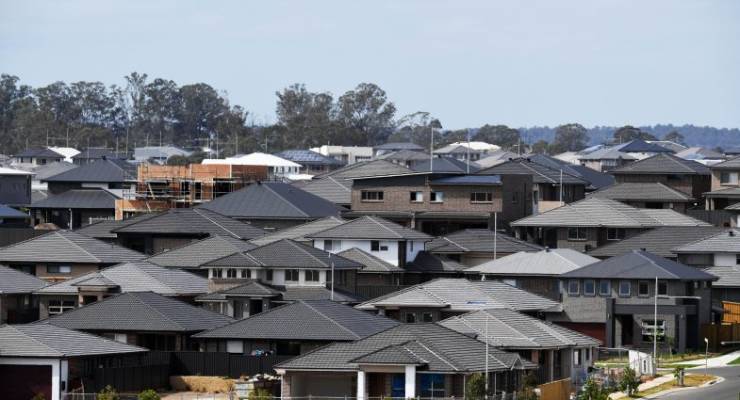
As if the young and disadvantaged haven’t faced enough depressing news lately, Australian house prices are again soaring to astronomical highs.
Two reports released last week found prices rose for the winter quarter despite most of the east coast being in lockdown, with the national average now $103,400 higher than last year.
Sydney prices are climbing by $850 a day — multiple times what an average Australian earns each day — to an eye-watering median auction price of $1.92 million. One two-bedroom apartment in Manly sold for a “stupid” $2.97 million at the weekend.
It’s hard to overstate how deeply broken our housing market is when records are being set despite unprecedented disease outbreaks putting whole sectors on ice, pushing many on to the dole and preventing buyers from even visiting homes they’re bidding for.
Morrison and Albanese missing in action
As is now standard amid national crises, the response from Canberra has been dispiritingly flaccid. The Liberal-led federal inquiry into housing affordability, which will hold hearings this week, is conveniently steering away from federal tax policies to pave the way for a do-nothing report.
Meanwhile Labor has dumped its negative gearing and capital gains tax policies, which stood the best chance of putting a lid on our overheating market. This short-sighted move has killed hope of serious action at the federal level for the time being, with alternatives such as a “Buffett tax” unlikely to be considered before the next election under Albanese’s “small target” strategy.
With federal reform at a dead end, those concerned about housing affordability are left turning to state governments for hope. And luckily there’s more they can do to help.
States can do more than supply-side solutions
The most frequent demand levelled at premiers is to allow developers to build more homes. It’s the property industry and free marketers’ favourite solution, and one propounded loudly by Liberal MP and federal housing inquiry chair Jason Falinski.
He’s partly correct. States should facilitate more homes being built, particularly the social, public and affordable ones Falinski doesn’t like, and the subdivision and densification of existing blocks. But Victoria and NSW are already putting plenty of builders to work. While there’s always more to do, beyond a certain point planning reforms are less likely to affect how much houses will cost than whether they’re in well-connected suburbs or pushed by NIMBYs to far-flung peripheries.
That’s because a massive influx of investors has soaked the market, encouraged by Howard’s capital gains tax discount. As Peter Martin wrote for The Conversation: “The supply of places to live in has kept pace with the demand for places to live in, but the supply of places to own has not.”
To help compete with cashed-up investors, states have also offered tax breaks and grants to give first-home buyers a leg up. However, these usually backfire by simply encouraging buyers to bid more at auctions.
But there is another state-based lever we rarely talk about: property taxes. Debate usually proceeds as if only the federal government can curb excessive demand. But many state governments levy taxes on houses the owner doesn’t live in, slugging investors harder for each property they buy. These are some of the most progressive taxes in the country and their design is particularly well-suited to discouraging those thinking about buying a second, third or 20th property.
The only problem? They’re far too low to make would-be investors think twice.
State investor taxes are too low
The Victorian government has levied a land tax since 1887. It applies only to investment, commercial and holiday homes valued over $250,000, and the highest rates are paid by those with the most valuable assets.
The Andrews government introduced an additional vacant property tax in 2017 to push owners to rent or sell their residential assets. This takes 1% of capital improved value from properties left unoccupied for six months in 16 high-demand council areas. Spring Street also levies an additional duty on foreign owners.
But the rates of these taxes are too low to have their desired effects. As the Grattan Institute’s John Daley and Brendan Coates wrote: “How much will these investors care? They are already leaving 2% of the value of the property on the table each year by not renting it out.” Data from Prosper Australia shows that the rate of home vacancy has risen 13% since the tax was instituted, showing the rate is insufficient to incentivise owners to list their properties.
Meanwhile NSW and the ACT are switching from upfront stamp duties to annual land taxes. This could make it cheaper for grandparents to downsize and let young families use those unused bedrooms, and so increase the number of auctions. But again, this won’t cut prices much if said families are still outbid by rapacious investors. Sure, make moving more frictionless, but the most important thing is to increase the amount levied on the asset rich.
If Canberra will not remove tax incentives to wealthy investors, the states need to whack them with countervailing disincentives. Dan, Gladys, gear up. It’s time to flatten the house price curve.








Labor are as bad as the LNP when it comes to housing, if Crikey were to research how many properties Labor Pollies had you would see why only fairy floss attempts to fix housing in this country. Look ,the leader Albo,is a millionaire in housing ,so what has he in common with a homeless 55 single women living in her car . Which is a growing problem in all states ,remember those properties where bought because of the generous-wages payed by taxpayers
Nailed it!
What a stupid incoherent response! What is your point???? Really need to proof read! The ALP put forward sensible policies in 2019, re negative gearing, and we saw what happened!!! Murdoch press and LNP lies had the desired effect.
As you say, Ben, it is not too difficult to tax speculators out of the market, the problem is lack of political will. Albo’s home base of Marrickville is awash with people eager to tell you about their capital gains and rental investments. It also has a ridiculous number of thoroughly generic properties boasting heritage listings, a lethal combination. A neighbouring suburb fought for years to keep a boarding house from being built within its august boundaries, with all manner of heritage nonsense enlisted in the fight. The ‘progressives’ are often the same people as the speculators.
It’s not just Albo’s home base.
What about the benches on both sides of all Houses of Parliament across Australia?
If all members with personal or family interests in appropriating property value rises recused themselves from voting on this matter, then something could – and would – be done.
It’s one of the most blatant conflicts of interest going, and younger Australians are the ones bearing the cost – now and for the next two or three decades..
It’s eminently feasible to do, but politically difficult as any time tax is mentioned in politics is has to be about removing taxes or reducing them. How many years has it been since a tax was increased, particularly on the wealthy?
Time to impose a tax on companies that bank land that would increase each year in line with how long they have held the land. For example no tax for land held for less than three years but then increasing sharply after that. It imposes a cost on their current strategy of restricting its release and maintaining an inflated price.
You can keep it simple with a land value tax applied across the board – preferably a revenue-neutral one (as in the ACT where stamp duty is reducing and revenue switched to land value).
Just about the last thing housing prices need is the uncontested Morrison-Albanese policy to push net migration to all-time record levels of 235,000 a year, much of which would flow to the western suburbs of Sydney and Melbourne.
Not much migration happening these days, hasn’t made much difference to property prices.
Net migration or NOM does not correlate with house prices; most would be temporary residents (hence, renters), not be eligible for a mortgage let alone be interested in buying; but RE agitprop is happy to co-opt the myth that NOM presented as (undefined) ‘immigration’ (in normal times capped permanent migration <1% of estimated raw population), is driving house prices and FOMO.